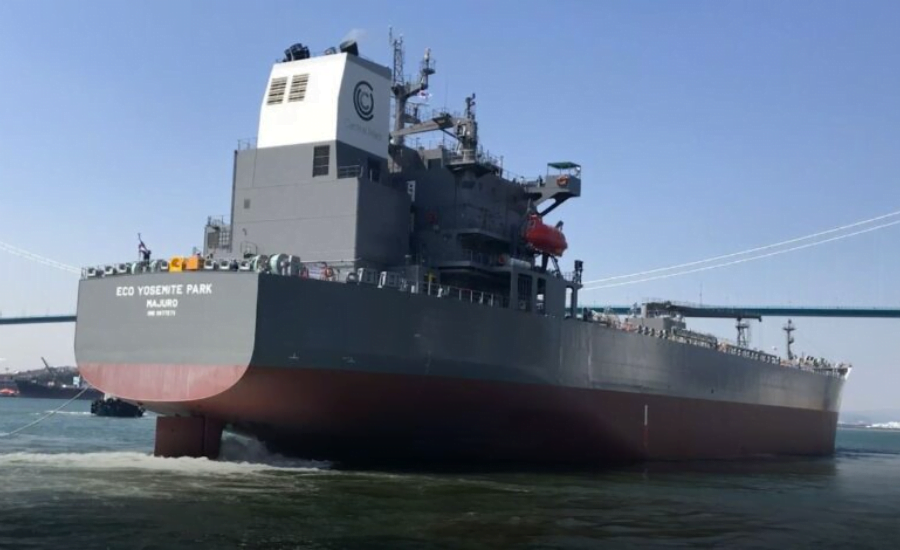
The Arabian Sea is located in the northwestern part of the Indian Ocean. To the north, it is bounded by the Gulf of Pakistan, the Gulf of Iran, and also the Gulf of Oman. It is surrounded from the west by the Arabian Peninsula, the Strait of Guardafui, and also the Gulf of Aden. It is bounded by the Laccadive Sea and the Maldives to the southeast, Somalia to the southwest, and also India to the east. The Arabian Sea is an important body of water for surrounding countries. It plays an important role in maritime trade. In this article, let’s explore
Ten Interesting Facts About The Arabian Sea
1. Formed 45-60 Million Years Ago
According to research data, the Arabian Sea was formed during the Paleogene period, approximately 45-60 million years ago. It was a time of plate tectonic fluctuations. The Indian subcontinent gradually moved northward and also began to rub against and collide with the Eurasian plate. In this process, the majestic Himalayas were formed, and the Indian plate was subducted beneath the Eurasian plate. As a result of these tectonic activities, the Arabian Sea was formed as part of the Indian Ocean. The Arabian Sea has an area of 3,862,000 square kilometers and a maximum depth of approximately 4,652 meters. It is also connected to the Red Sea by the Gulf of Aden via the Bab el-Mandeb Strait and to the Gulf of Oman. It is connected to the Persian Gulf.
2. The Arabian Sea Has A Monsoon Climate
The climate of the Arabian Sea is influenced by several factors, such as geographical location, winds, ocean currents, and surface water temperature. Summers are hot and humid, and winters are not that cold. The surface temperature is between 25°C and 30°C throughout the year. Summer will be warm. There are seasonal winds that blow from the southwest in summer and from the northeast in winter.
These bring significant rainfall and severe weather and also cause flooding during the monsoon period, which lasts from April to November. Tropical cyclones are also common, especially in the summer when surface temperatures are highest. They bring rain and even dangerous storms to coastal areas. Nevertheless, the Arabian Sea region is important from the perspective of climate research and the study of global marine ecosystems. It is home to a myriad of aquatic species, and millions of people make a living from fishing.
3. Known By Various Names In Historical Documents
The Arabian Sea has always been an important trade and cultural route. Therefore, in the writings of Arab and European travelers and geographers, it is referred to by several names, including the Aqzar Sea or the Green Sea, the Bar-e-Fars or the Persian Sea, the Hindu Sea, and the Makran Sea. Also known as the Erythraean Sea. , Oman Sea, Indian Sea, etc. In Indian folklore, it is often referred to as Sindhu Sagar, Darya, or Samudra in Arabic.
4. There Are Many Important Ports
Jawaharlal Nehru Port, located in Mumbai, India, is the largest port on the Arabian Sea. It is also India’s largest container port. It began operations on May 26, 1989, and over 30 years has evolved from a bulk cargo facility to a world-class container port. She is connected to more than 200 ports around the world and ranks 26th in the list of the 100 largest container ports in the world. There are many other ports on the Arabian Sea coast such as Mumbai Port, Kandla Port, Mundra Port, Hazira Port, Pipavav Port, Nhava Sheva Port, New Mangalore Port, Mormungao Port, Kochi Port, Karachi Port, Qasim Port, Gwadar Port, etc. There are ports and harbors. Ports, Chabahar Port, Salalah Port.
5. Socotra Is The Largest Island In The Arabian Sea
The largest island in the Arabian Sea is Socotra. It is part of a small archipelago consisting of four islands. Located in the western part of the ocean near the Gulf of Aden, approximately 240 km east of Somalia and 380 km south of Yemen. It is known for its rich of biodiversity and unique endemic of flora and fauna found nowhere else in the world. The island’s isolation and harsh climate enabled its development over millions of years. Famous tree species include the dragon’s blood tree, Socotra, starling, and cucumber tree.
The island is also known for its picturesque scenery. Beaches, cliffs, mountains. The island is a UNESCO World Heritage Site and a famous tourist destination for ecotourists and travel enthusiasts. However, they face the impacts of climate change, overfishing, and invasive species. Other important islands in the Arabian Sea include Lakshadweep, Masira, Astora, etc.
6. There Are Two Major Basins, Including The Arabian Basin And The Somali Basin
The Arabian and Somali basins of the Arabian Sea are separated by the Carlsberg Ridge, a mid-ocean ridge that extends from the Gulf of Aden to the Laccadive Ridge. The Arabia Basin is located on the west side of the Carlsberg Ridge and is significantly deeper than the Somali Basin on the east side of the ridge. The latter is very shallow, with an average depth of about 2500 m, while the Arabia Basin has an average depth of about 4650 m, making it one of the deepest ocean basins in the world. It is full of gorges and canals formed by deep ocean currents over thousands of years. Water temperature and salinity also differ. Both basins are important for the region’s oil and gas reserves and fisheries.
7. The Arabian Sea Contains The World’s Largest Dead Sea Area
The Dead Sea Zone is an area of the ocean where oxygen levels are so low that it is nearly impossible for marine life to live and thrive. These oxygen minimum zones form naturally but are also caused by human activities such as agricultural drainage and wastewater discharge into the ocean. It can also be caused by high temperatures that blow winds toward India, ultimately bringing nutrients to the waters of the Arabian Sea and reducing oxygen levels. In winter, phytoplankton that live in low oxygen levels turn these areas bright green.
There is reportedly a dead zone in the northern and central parts of the ocean. A 2015 study found a huge dead zone off the coast of Oman. It was caused by nutrient pollution and agricultural runoff. Another study in 2020 reported that the dead zone in the Arabian Sea has widened in recent decades, reducing oxygen levels by up to 30%. These zones affect not only marine life but also the livelihoods of coastal communities that depend on fishing and other activities. Scientists are trying to find a way to solve this problem.
8. The Indus River Is The Largest River That Flows Into The Arabian Sea
The largest river that flows into the Arabian Sea is the Indus River. Narmada, Sabarmati, and Tapi are other rivers that flow into the body of water. The Indus River is one of the world’s longest rivers, flowing from the Himalayas through India into Pakistan and into the Arabian Sea. The Narmada River is a major river flowing through central India, flowing westward before emptying into the Arabian Sea. The Tapti River flows into the sea near the city of Surat, and the Sabarmati River flows through Gujarat state in western India and into the Arabian Sea near Ahmedabad. The Mahi and Zuari rivers flow through western India and empty into the Arabian Sea.
9. The Arabian Sea Is Home To A Rich Marine Biodiversity
The Arabian Sea is home to many endemic species, including the alga Sargassum psis zanardinni, which is found nowhere else in the world. The sea is also home to sharks, tuna, barracuda, mackerel, barracuda, swordfish, sunfish, green sea turtles, hawksbill turtles, and dugongs. Cetaceans such as dolphins, humpback whales, minke whales, sperm whales, and killer whales also live here. Flying fish live on the surface of the Arabian Sea in Mumbai, India. You can see five types of flying fish here.
The waters of the Arabian Sea off the coast of Mumbai are also home to stingrays, barnacles, fiddler crabs, and jellyfish. It is also an important migration route for many seabirds, such as gulls, terns, and pelicans. Additionally, small-scale marine fisheries occur in Africa, the west coast of India, and the Arabian Peninsula. Commercial fishing activities are carried out by countries such as India, Pakistan, the United Arab Emirates, Yemen, Maldives, Japan, and South Korea.
10. There Are Many Coral Reefs In The Arabian Sea, The Best Known Being Those Off The Coasts Of India, Yemen, And Oman.
It is home to a variety of marine life, including colorful fish, crustaceans, and mollusks. The Arabian Sea is home to many different types of seagrass, and there are also mangrove forests along the coast. One of the most popular coral reefs in the Arabian Sea is the Lakshadweep archipelago, a group of 36 coral islands off the southwest coast of India. Another coral reef system is Oman’s Musandam Peninsula. They are located in a marine reserve and are home to 900 species of fish, turtles, dolphins, and more. The Socotra Islands also have many coral reefs. They are known for their rich biodiversity. However, they are threatened by human activities such as pollution, climate change, and overfishing.










